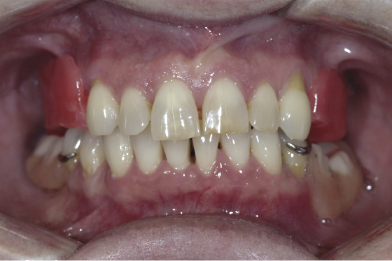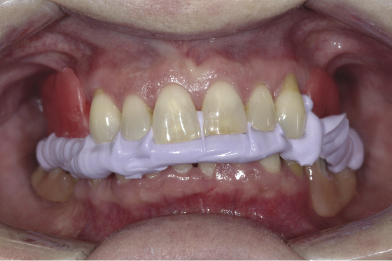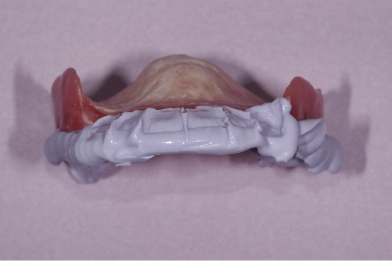14
Occlusal (bite) registration materials
Figure 14.1 Clinical photograph showing wax block-outs of missing maxillary posterior teeth and a lower RPD in place. (Courtesy of Dentsply International.)

Figure 14.2 Occlusal registration taken with Regisil® vinyl polysiloxane (VPS) bite registration material. (Courtesy of Dentsply International.)

Figure 14.3 Wax maxillary denture base fabricated on VPS registration. (Courtesy of Dentsply International.)

Figure 14.4 Casts of maxilla and mandible with VPS occlusal registration in place. (Courtesy of Dentsply International.)

When replacing teeth and hard tissue, occlusal—or bite—registration is necessary to record the relative positions of the upper and lower jaws and the dentition when the jaws are brought into apposition in centric relation. This ensures that the restored tooth will be correctly aligned and interdigitating with the opposing teeth on normal closing of the jaws.
For satisfactory occlusal registration, the recording medium must satisfy certain criteria (Box 14.1). Ease of handling is rarely a problem with modern materials since they are cartridge-delivered and have sufficient flow (i.e., consistency) to adequately and evenly spread over (i.e., wet) the teeth before starting to set.
After placement, the recording medium must remain in position without/>
Stay updated, free dental videos. Join our Telegram channel

VIDEdental - Online dental courses


